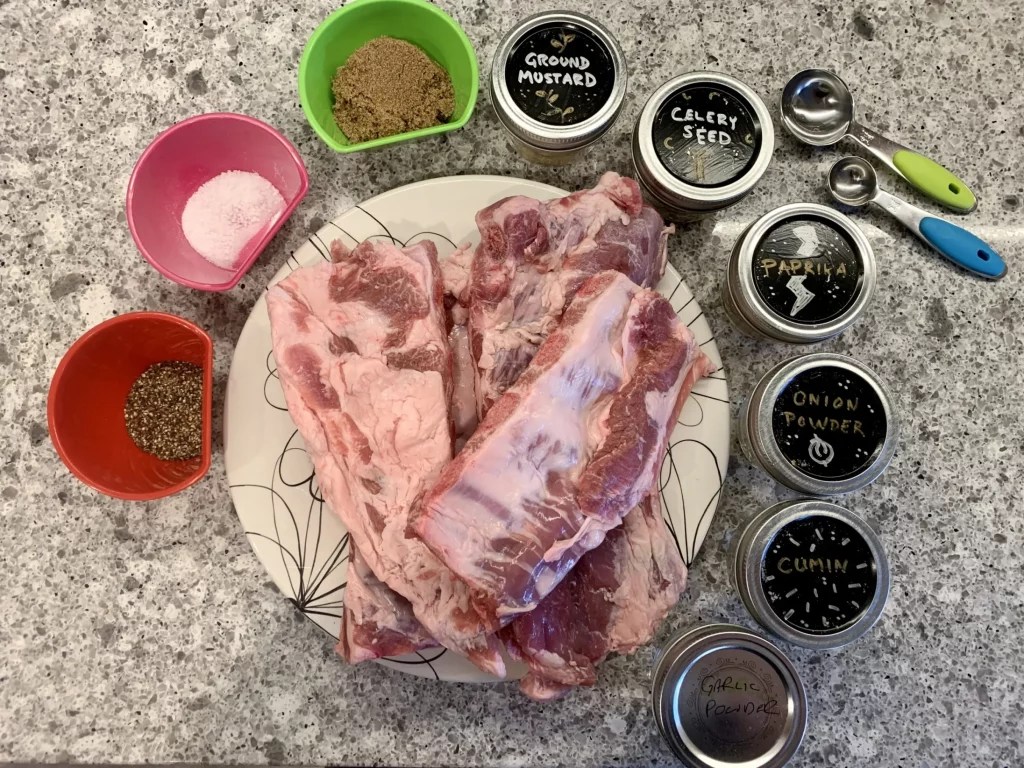It’s the first Saturday in May and I woke up to a clear blue sky and a weather forecast that was begging for a day outdoors.
It’s always a gamble, of course, to plan twelve hours ahead of your cooking time for a backyard grill, particularly something as elaborate as a fire smoking some pork ribs. The rain could appear over the horizon and soak the suburbs. The weather could turn cold on a dime still this early in the season. Or the wind could push through and make building a fire a hurculean feat.
I took the gamble, though.
I had my reasons for stopping by a new local grocery store last night and a big one point five kilogram pack of ribs caught my eye. “I’m making ribs on the fire tomorrow.” I told my wife as stocked up the fridge with my purchases upon returning home.
“Oooh. Yum!” She replied.
“I’m also making it up as I go along.” I told her.
That got a less enthusiastic response.

I’ve never grilled ribs over an open fire, so tonight is going to be an adventure. It’s a new-to-me process, but makes use of lots of practiced skills that add up to what I hope will be a success. So, I’ll start with what I know, a basic dry rub and about eight hours in the fridge to let it season up a bit.
Dry Rub Recipe
60ml brown sugar
15ml salt
15ml ground black pepper
15ml paprika
30ml garlic powder
30ml onion powder
10ml ground celery seed
10ml ground mustard
10ml cumin
I spread this evenly on the washed and dried ribs. There was enough in this batch for about 2kg of meat, so I had a little bit left over when everything had been generously coated and wrapped.

Dry rubs have a couple of positive features I’m looking for in their use: Flavour. Tenderizing. Simplicty. And more, I’m sure.
I don’t have much room in the fridge for a big old marinade right now, either, and we’ve been trying to cut back on single-use plastic like large zip bags (he writes as he posts a photo of cling wrap on his countertop.)
But for more important results, back to things like flavour and texture. If you look at the recipe, for example, this particular rub has a solid tablespoon of salt. Eight hours resting in that much salt has an effect on the meat that is essentially a preliminary cure. It’s not going to make this into a true cure of the meat, but it will start to draw some of the moisture from the tissue and will have a tenderizing effect on the final texture.
My basic rub recipe also has a lot of sugar. Partly, it’s there to even out the spices. Literally. The sugar is a good way to bulk up the rub and make sure it spreads evenly across the meat and doesn’t concentrate too much of the spice unevenly as my untrained hands dash it across the raw flesh. Also, while I’ll add a sauce when I put these over the fire, that sugar in the rub will be the start of the carmelization during the first exposure to heat that will crank up the sticky sweet flavour many people associate with ribs.

The cooking of these gorgeous hunks of meat will happen later today, and I’ll photograph and post the results in the upcoming part two.
For now, cross your fingers for that weather holding out!






You must be logged in to post a comment.